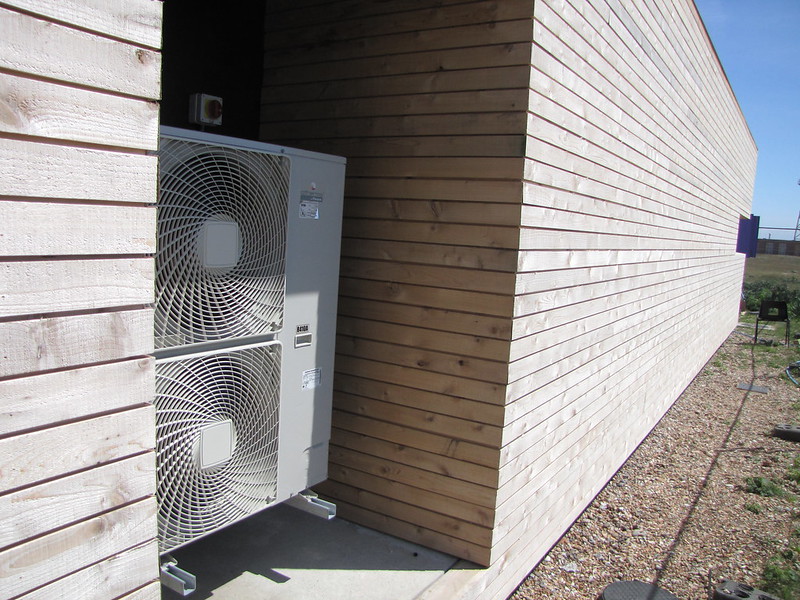Installing an air-to-air heat pump is a complex process that requires a deep understanding of HVAC systems, electrical wiring, and refrigeration. While it might be tempting to attempt a DIY installation to save on costs, it is highly recommended to hire a professional installer who is accredited by reputable organizations such as the Microgeneration Certification scheme (MCS). This ensures that the installer has undergone proper training and adheres to industry standards.
Choosing the Right Heat Pump Model
Before installation, it is crucial to choose the right heat pump model based on your home’s size, insulation level, and heating needs. Air-source heat pumps come in various types, including air-source, ductless mini-split, gas-fired, and geothermal. Each type has its advantages and disadvantages, and selecting the right one requires careful consideration.
When choosing the heat pump model, consider the following factors:
- Home Size: Determine the square footage of your home and select a heat pump with the appropriate capacity to efficiently heat and cool your living space.
- Insulation Level: Evaluate the insulation levels in your home, as this will impact the heat pump’s efficiency and performance. Well-insulated homes may require a smaller capacity heat pump.
- Heating Needs: Consider the climate in your region and the heating requirements for your home. Air-source heat pumps are generally more efficient in milder climates, while gas-fired or geothermal heat pumps may be better suited for colder regions.
- Energy Efficiency: Look for heat pumps with high Seasonal Energy Efficiency Ratio (SEER) and Heating Seasonal Performance Factor (HSPF) ratings, as these indicate better energy efficiency.
- Noise Levels: Choose a heat pump with a lower outdoor sound rating (decibels) to minimize noise disturbance.
The Installation Process
The installation process involves several critical steps, including designing an efficient heat pump system tailored to your home, selecting the right heat pump model, and ensuring proper refrigerant charge and airflow. Improper installation can lead to reduced efficiency, performance issues, and even safety hazards.
Step 1: Accreditations and Expertise
Choose an installer who is accredited by reputable organizations such as the Microgeneration Certification scheme (MCS). This ensures that the installer has undergone proper training and adheres to industry standards. Look for installers with a proven track record and extensive experience in installing air-source heat pumps for a range of homes.
Step 2: System Design
The installer should design an efficient heat pump system tailored to your home, taking into account factors such as the size of the home, insulation level, and heating needs. This may involve:
- Calculating the heating and cooling load of your home using industry-standard methods, such as the Manual J calculation.
- Selecting the appropriate heat pump capacity and model based on the load calculations.
- Determining the optimal placement of the indoor and outdoor units to ensure efficient airflow and minimize noise.
- Designing the ductwork or piping system to distribute the conditioned air effectively throughout your home.
Step 3: Refrigerant Charge and Airflow
Proper refrigerant charge and airflow are crucial for the heat pump’s efficiency and performance. Technicians should follow these steps:
- Measure the refrigerant charge and adjust it to the manufacturer’s specifications.
- Increase the airflow by cleaning the evaporator coil or increasing the fan speed. This may require some modification of the ductwork.
- Ensure that the air filters are clean and replaced regularly to maintain optimal airflow.
- Check for any obstructions or restrictions in the ductwork that could impede airflow.
Step 4: Noise Reduction
Locate the outdoor unit away from windows and adjacent buildings, and select a heat pump with a lower outdoor sound rating (decibels). You can also reduce noise by:
- Mounting the outdoor unit on a noise-absorbing base or platform.
- Ensuring the unit is level and securely installed to prevent vibrations.
- Considering the use of sound-dampening enclosures or barriers around the outdoor unit.
Step 5: Drainage
Ensure proper drainage for the heat pump to prevent water damage to the unit and surrounding areas. This may involve:
- Installing a condensate drain line to safely remove the water produced by the heat pump’s operation.
- Ensuring the drain line is properly sloped and free of any obstructions or kinks.
- Considering the use of a condensate pump if the drain line cannot rely on gravity alone.
Step 6: Electrical Wiring and Safety
The installation process also involves proper electrical wiring and safety considerations. Ensure that:
- All electrical connections are made in accordance with local building codes and the manufacturer’s instructions.
- The heat pump is properly grounded to prevent electrical hazards.
- Overcurrent protection devices, such as circuit breakers, are installed to safeguard the system.
- The electrical panel has sufficient capacity to handle the additional load of the heat pump.
Costs and Incentives
The cost of air-source heat pump installations can vary depending on your chosen system and location within Great Britain. In England and Wales, the Boiler Upgrade Scheme (BUS) offers a £7,500 grant, which can significantly reduce installation costs. In Scotland, Home Energy Scotland provides grants of £7,500 for air source heat pump installation, and this increases to £9,000 for people in remote areas who qualify for the rural uplift.
Conclusion
Installing an air-to-air heat pump is a complex process that requires a deep understanding of HVAC systems, electrical wiring, and refrigeration. While it might be tempting to attempt a DIY installation to save on costs, it is highly recommended to hire a professional installer who is accredited by reputable organizations such as the Microgeneration Certification scheme (MCS). Proper installation is crucial for the heat pump’s efficiency, performance, and safety.

